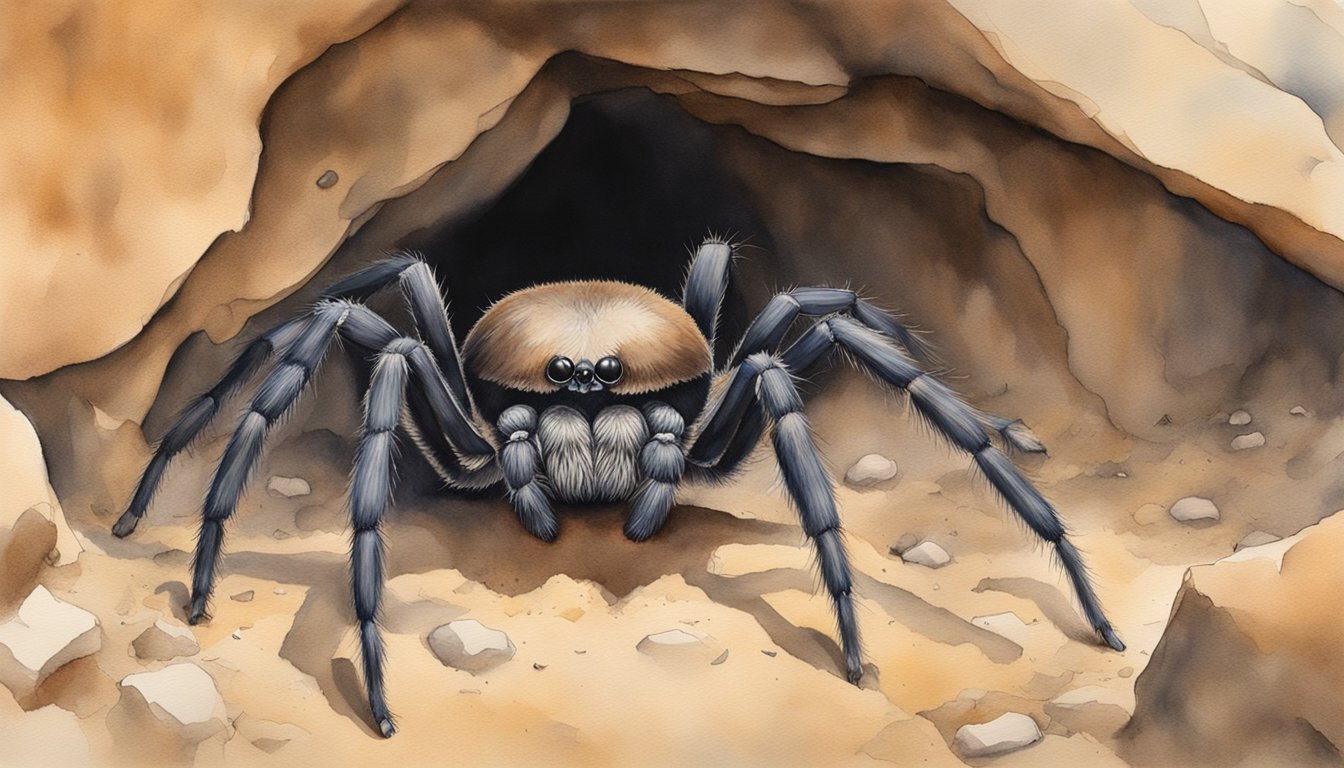Overview of the Giant Trapdoor Spider

The recent discovery of a new giant trapdoor spider species, Euoplos dignitas, has intrigued researchers and the public alike. This extraordinary arachnid has been a significant addition to the diverse spider fauna of Australia, specifically in the Queensland region.
Species Identification and Discovery
Euoplos dignitas was identified by a team of arachnologists and subsequently made headlines for its remarkable size. The trapdoor spider belongs to a group known for their cryptic lifestyles and unique burrowing behavior. The Queensland Museum Network played a crucial role in the collection and research leading to the spider’s classification. Found in the Brigalow Belt of Central Queensland, the species adds to the known species of trapdoor spiders that are often unnoticed due to their secretive nature.
Physical Characteristics and Habitat
The new species boasts a body length of up to 5cm, making it an impressive specimen within its genus. Its habitat is characterized by woodlands with black soils, where the spiders construct their burrows. These habitats are typically humid, forested areas, but can also extend to suburban gardens. The burrows of Euoplos dignitas feature distinguishing silken-hinged doors, a signature trapdoor mechanism for which these spiders are named. This spider thrives in the underground, laying wait for prey, and their presence is a telltale sign of the ecological health of their natural range. The discovery raises awareness of the importance of these creatures, while also highlighting the need to protect woodland habitats amidst concerns of land clearing and the risk of endangered species.
Conservation and Interaction with Humans
Australia is renowned for its unique wildlife, which includes some of the largest and most venomous spiders in the world. Conservation and human interaction with these arachnids, particularly with species like the Sydney funnel-web spider, have significant implications for both public health and ecological balance.
Venom Research and Medical Importance
The Sydney funnel-web spider, specifically the male of the species, is equipped with a lethal venom that has claimed lives in the past. However, extensive research on this venom has led to the development of effective antivenoms. Programs such as the antivenom program at various institutions, including the Australian Reptile Park, play a crucial role in milking funnel-web spiders for their venom. This venom is essential for producing antivenom, which has reduced the incidence of fatalities from bites. Handling spiders during venom extraction requires expertise and care, which is why spider experts and researchers are integral to the process.
Conservation Efforts and Environmental Impact
Conservation efforts for funnel-web spiders, like the most significant specimen named Hercules, found on the Central Coast, directly influence their populations and the environment. Regulation and habitat protection are vital, as exemplified when conservationists found Hercules near a local hospital and realized it was a major find. Research by dedicated professionals such as Emma Teni, a research assistant, aids in understanding these spiders’ ecological roles and developing conservation strategies. Michael Rix, as principal curator at the Queensland Museum, contributes to the documentation of spider species, such as detailing new findings in the Journal of Arachnology. These conservation efforts ensure that not only are the spiders’ habitats preserved, but humans can safely coexist with them, minimizing lethal interactions and maintaining biodiversity along Australia’s east coast, from the Sydney region to the rainforests of Queensland.

